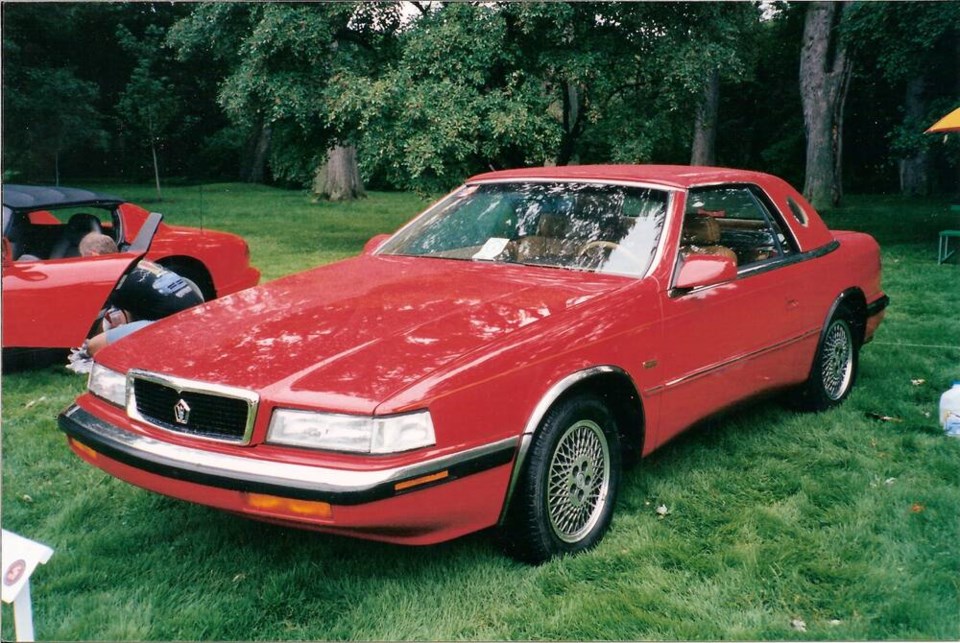By the mid-1980s the Chrysler Corp. was ready for a little glamour. After retreating from the abyss of bankruptcy, thanks to government loan guarantees, chairman Lee Iacocca wanted to add some excitement to the product line.
The sensible angular Dodge Aries/Plymouth Reliant K-car and its permutations had saved the company. And the front-wheel drive Dodge Caravan/Plymouth Voyager minivan was creating and consolidating a new market that Chrysler would control for years. Chrysler had even revived the convertible.
But Iacocca wanted more, an image car. And who better to provide it than the Italians. It complemented Iacocca’s Italian heritage and led him to a grand old Italian marque, Officine Alfieri Maserati of Modena, now under the control of expatriate Argentine Alejandro DeTomaso who was in the Italian sports luxury car business.
The two men knew each other since they collaborated in the 1970s during Iacocca’s Ford days on the Ford-powered, mid-engined DeTomaso Pantera sports car. It was sold by American Lincoln-Mercury dealers, but not sold in Canada. Then in the early 1980s DeTomaso lent his name to a tape-and-trim special Dodge DeTomaso 024 sport coupe.
Maserati’s history reached back to 1926, similar to Chrysler’s, but its reputation was based more on racers than road cars. It began seriously marketing passenger cars after the Second World War, although it continued in Grand Prix Formula One racing until 1957.
In concentrated on grand touring cars such as the Mistral, Khamsin and Mexico, Maserati had a remarkable mystique in spite of its limited production.
Iacocca wanted some of that magic for Chrysler, and for $2.8 million Chrysler bought five per cent of Maserati. He was anxious to jointly develop a GT-type luxury specialty car wearing both the Chrysler pentastar and Maserati trident.
A deal was consummated in 1984 for a smallish two passenger convertible that would exude sybaritic opulence and the cache of Italian fabrication.
For economy and expediency it was based on the Dodge Daytona platform with the wheelbase shrunk from 97 inches (2,464 mm) to 93.3 inches (2,370 mm). It had K-car rack-and-pinion steering, MacPherson strut front suspension and rear beam axle with coil springs. Power came from Chrysler’s transverse 2.2 litre four. Transmissions would be either a five-speed German Getrag heavy duty manual or Chrysler’s three-speed automatic. Brakes were anti-lock four-wheel discs.
Two engine versions were initially available. For the manual model Maserati modified the 2.2 four with a twin cam 16-valve head, new connecting rods, aluminum pistons and fully counter-weighted forged steel crankshaft. It produced 200 horsepower.
The automatic version got a tamer eight-valve, 160 horsepower 2.2 four. Both engines were turbocharged and intercooled and had electronic port fuel injection and electronic ignition. A 3.0 litre Mitsubishi V-6 would come in 1990.
Styling was by Maserati although a Chrysler instrument panel and console were used. The car’s lines were pleasing if conservative with no really jarring or outstanding features. Maserati wrapped the two passengers in sumptuous hand-stitched Italian leather and deep pile carpeting.
When retracted, the lined manual top hid beneath a body-colour panel. A removable hardtop with round “porthole” windows was also provided.
It bore the rather cumbersome name of Chrysler TC by Maserati, the TC presumably standing for touring convertible.
Performance with the manual was strong. Road & Track (6/89) recorded zero to 60 mph (97 km/h) in 6.9 seconds for the 1,458 kg (3,215 lb) convertible. They estimated top speed of 135 mph (217 km/h). The three-speed automatic took a mediocre 9.9 seconds to 60 (97).
Despite its grand heritage, the Chrysler TC by Maserati never really took off. There were several reasons, including the long delay between announcement and availability.
The TC was unveiled in 1985 with delivery promised by 1987 but the first boatload didn’t reach San Francisco — California was its test market — until the end of 1988.
This delay was caused by several differences: wrangling between Chrysler and Maserati over quality, and even about the placement of the nameplates. It overshadowed everything else about the TC.
Journalists had a field day with the delay, suggesting TC meant “To Come,” or “Tomorrow’s Car.” Automotive News went so far as to name it the 1988 “Flop of the Year.”
Chrysler also contributed by introducing its very own beautiful second generation 1987 LeBaron coupe/convertible which many considered as attractive as the TC. And it was roomier and about half the price.
When the TC finally arrived, it sold slowly. Chrysler soldiered on until 1990, finally giving up after some 7,500 had been built. It wasn’t officially marketed in Canada, although some found their way across the border.
History will record the TC as another of those Euro-American hybrids like GM’s Cadillac Allante and Ford’s Merkur XR4Ti that began with high hopes but never really caught on.



